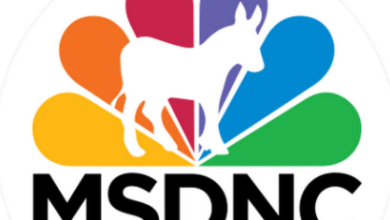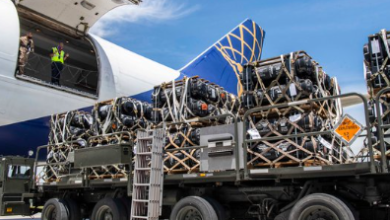Offshore Wind Industry Facing Massive Headwinds As Enthusiasm Dwindles, Losses Mount

- The U.S. offshore wind industry has struggled in recent weeks, a development which could complicate President Joe Biden’s climate agenda.
- Two major offshore wind companies have paid tens of millions of dollars in fines to get out of deals they signed to provide wind-sourced power to utility companies, a third has seen nearly 30% of its market capitalization wiped out after announcing a major reduction in the expected value of some of its East Coast projects and an August sale of three offshore wind lease areas by the Biden administration drew disappointing levels of interest from companies reported to have had interest in the bidding.
- “The wind industry was already heavily subsidized before the Inflation Reduction Act, and after the IRA, there is more money and the favoritism is greater,” Daren Bakst, director of the Competitive Enterprise Institute’s Center for Energy and Environment, told the Daily Caller News Foundation, adding that “the wind industry, like any industry, should stand on its own without government handouts paid for by American taxpayers.”
The U.S. offshore wind industry, key to President Joe Biden’s climate agenda, has struggled in recent months due to inflation, rising interest rates and mounting supply chain difficulties.
Several companies involved in offshore wind projects off the East Coast have experienced financial difficulties as inflation, supply chain difficulties and rising interest rates have hampered the sector. Despite the wind industry receiving considerable support from subsidies in the Inflation Reduction Act (IRA), Biden’s signature climate bill, some firms have paid large fines to get out of energy deals they signed, while one company has seen its stock price tank because of impairments to its projects.
“Biden has a top-down ‘deindustrialization policy,’ in much the same way Germany did,” Dan Kish, senior fellow for the Institute for Energy Research, told the Daily Caller News Foundation. “It’s amazing to watch politicians try to design a system that will work to replace one we know works and made us the number one economy in the world.”
Biden’s Deputy Campaign Manager Claims He Didn’t Say He ‘Is Going To End The Fossil Fuel Industry’https://t.co/i5X66t49QW
— Daily Caller (@DailyCaller) October 26, 2020
The IRA featured significant tax credits and manufacturing subsidies to drive offshore wind investment from the private sector, and companies have invested more than $7 billion in offshore wind projects since the IRA became law, according to the White House. The administration is aiming to have offshore wind provide enough energy to provide electricity for 10 million American homes by 2030 in support of its wider goals to decarbonize the American power sector by 2035 and the overall U.S. economy by 2050.
Orsted, a Danish company involved in several East Coast offshore wind projects, announced in late August that it had updated its projections for several projects, marking down their anticipated value by $2.3 billion. The next day, the company’s stock price plummeted by about 25%.
“We continue to advance our projects, including investments that are creating American energy and American jobs,” an Orsted spokesperson told the DCNF. “Macroeconomic challenges, such as supply chain constraints and high inflation, are impacting our projects, similar to how these factors are impacting all long-term capital investments in the U.S. and around the world.”
The company’s announcement followed difficulties in talks with Biden administration officials to unlock more federal subsidies, Reuters reported.
“We are still upholding a real option to walk away” from projects, said Mads Nipper, Orsted’s CEO, Bloomberg News reported Tuesday.
Orsted was one of numerous petitioners that asked the New York Public Service Commission, the state’s utility regulator, to renegotiate terms of energy deals with utility companies. Revised agreements could feature prices nearly 50% higher than initial contracts, according to the New York State Energy Research and Development Authority.
“The wind industry was already heavily subsidized before the Inflation Reduction Act, and after the IRA, there is more money and the favoritism is greater,” Daren Bakst, director of the Competitive Enterprise Institute’s Center for Energy and Environment, told the DCNF. “The wind industry, like any industry, should stand on its own without government handouts paid for by American taxpayers.”
Prior to the IRA, wind farm operators were still able to access tax credits, according to the Department of Energy. The IRA extended and increased those existing subsidy programs to further spur the offshore wind industry.
Orsted is not the only offshore wind company involved in East Coast operations that has encountered potential financial problems. Avangrid, a subsidiary of the Spanish firm Iberdrola, paid the Massachusetts Department of Public Utilities (MDPU) $48 million in July to get out of a deal to sell power to utility companies, CommonWealth reported.
SouthCoast Wind, another company involved in offshore wind development off of the Massachusetts coast, paid MDPU $60 million in fines to get out of a deal it had reached to sell wind-generated power to several utility companies, the Nantucket Current reported .
“Closing the Massachusetts power purchase contracts was never the plan but impacts of COVID-related supply chain disruptions and the war in Ukraine made them unfinanceable,” Rebecca Ullman, director of external affairs for SouthCoast Wind, told the DCNF. “This development enables SouthCoast Wind to move forward and to compete in upcoming solicitations,” Ullman continued, adding that “the project is full steam ahead.”
Green Energy Giant A No Show At Offshore Wind Hearing Amid Concerns Its Projects Might Be Linked To Whale Deaths https://t.co/LkKumMVoOd
— Daily Caller (@DailyCaller) March 17, 2023
“The most fundamental issue is that what the administration is trying to do is artificially get the wind industry going when it is not ready yet,” Kevin Dayaratna, senior research fellow for the Heritage Foundation, told the DCNF. “When you try to do that, things cost more and keep getting even more expensive.”
The Biden administration put three lease zones in the Gulf of Mexico for sale in August. Of the three, two did not receive a single bid from any of the companies reportedly interested in the sales.
The only zone that garnered bids received a total of three offers from two different firms, and the winning bid marked the lowest sale price for an offshore wind lease since the Obama administration, Reuters reported at the time.
The apparent difficulties in the offshore wind industry are “nothing but a manifestation of failed Bidenomics,” Dayaratna continued. “Even if you didn’t have the failed Bidenomics, it wouldn’t push the needle on climate change,” he said of the Biden administration’s offshore wind strategy.
🚨EXCLUSIVE🚨
A conservation group quietly alerted Senate Democrats that the development of offshore wind farms might need to “cease” to protect an endangered species of whales
Read more here: https://t.co/0uiJiIPzFP
— Daily Caller (@DailyCaller) January 22, 2023
Aside from the financial difficulties that the industry appears to be facing, environmental concerns about offshore wind developments’ ecological impacts are driving a mounting public relations issue. More than 200 whales have died along the East Coast since 2016, according to Forbes, an uptick that has led the National Oceanic and Atmospheric Administration (NOAA) to declare “unusual mortality events” for humpback and North Atlantic right whales since 2016 and 2017, respectively, a timeline which generally aligns with the 2016 beginning of commercial-scale offshore wind operation along the East Coast, according to NOAA.
Government agencies maintain that there is currently no scientific evidence that proves a connection between offshore wind developments and the surge in whale deaths. However, the Bureau of Ocean Energy Management is spending up to $850,000 to fund research to fill in “key information gaps in acoustic ecology of North Atlantic right whales,” according to a grant notice the agency posted to its website in May.
The grant notice suggests that the government may be investigating the possible link between offshore wind and dead whales, as offshore wind’s critics speculate that underwater noises caused by offshore wind development disorient the whales and allow them to swim headlong into hazards that they may have otherwise avoided, according to expert energy analyst G. Allen Brooks.
The White House, Iberdrola and Avangrid did not respond immediately to requests for comment.
Content created by The Daily Caller News Foundation is available without charge to any eligible news publisher that can provide a large audience. For licensing opportunities of our original content, please contact licensing@dailycallernewsfoundation.org




